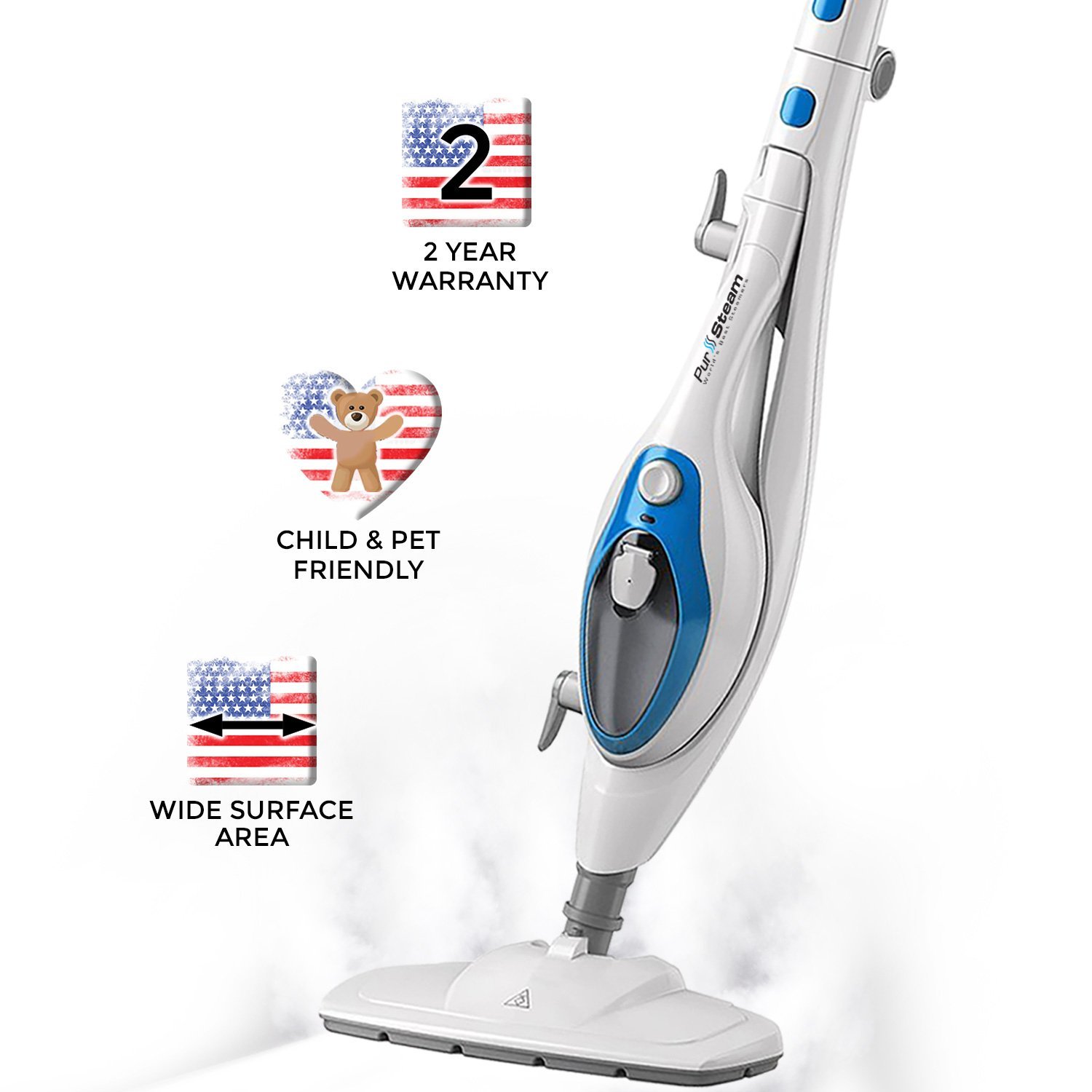Have you ever stared at your tile floor, feeling overwhelmed by the grime and dirt clinging to its surface? You know it needs a deep clean, but the thought of scrubbing on your hands and knees seems daunting. Enter the steam mop, a modern cleaning marvel promising sparkling floors with minimal effort. But are steam mops truly the answer to your tile-cleaning woes?

Image: www.pinterest.com
This article will delve into the world of steam mops, exploring their effectiveness for tile floors, analyzing their pros and cons, and offering practical tips for maximizing their power. Whether you’re a homeowner seeking a convenient cleaning solution or a professional cleaner searching for advanced tools, this comprehensive guide will equip you with the knowledge you need to make informed decisions.
Understanding Steam Mops: How They Work and Why They’re Popular
Steam mops are essentially powered scrubbers that use hot steam to loosen and lift dirt, grime, and bacteria from surfaces. They typically consist of a water tank, a heating element that generates steam, and a mop head that distributes the steam onto the floor.
The popularity of steam mops stems from their ability to provide a deep clean without harsh chemicals. The hot steam effectively kills germs and bacteria, making them a hygienic choice for families with young children or pets. Moreover, steam mops are incredibly versatile, cleaning not only tile floors but also other surfaces like grout, sealed hardwood, and even steam-safe upholstery.
The Advantages of Steam Mops for Tile Floors: A Closer Look
While the idea of steam cleaning might seem like a simple concept, the benefits of steam mops for tile floors run deeper than meets the eye. Here are some key advantages:
- Deep Cleaning Power: Steam penetrates deep into the pores of tile, lifting even the most stubborn dirt and grime. This is especially beneficial for grout lines, which are notoriously difficult to clean with traditional mopping methods.
- Hygiene and Sanitization: The high temperatures of steam effectively kill 99.9% of germs and bacteria, making steam mops particularly suitable for households with allergies, asthma, or small children.
- Environmentally Friendly: Steam mops use water as their primary cleaning agent, eliminating the need for harsh chemicals that can be harmful to both the environment and your health.
- Versatile Cleaning: While excellent for tile floors, steam mops can also be used for various other cleaning tasks, including cleaning sealed hardwood floors, grout, and even steam-safe upholstery.
Are There Any Disadvantages to Using a Steam Mop?
Despite their many advantages, steam mops aren’t a perfect cleaning solution for every situation. Here are some potential drawbacks to consider:
- Time Commitment: While steam mops offer a faster cleaning process than manual scrubbing, they still require some time to heat up and complete the cleaning cycle.
- Not for All Tile Floors: Steam mops are not recommended for all tile floors. Some antique or delicate tiles may not withstand the heat and moisture.
- Potential Damage: While steam mops are generally safe for most tile floors, they can cause damage if used incorrectly. Excess moisture can seep beneath grout, leading to mold growth.
- Cost: Steam mops can be more expensive than traditional mops, especially for higher-end models.

Image: www.bestgarmentsteamerreviews.net
Choosing the Right Steam Mop: A Guide to Finding the Best Option
With a plethora of steam mop models available, choosing the right one can feel overwhelming. Here are some factors to consider:
- Heating Time: The amount of time it takes a steam mop to heat up varies depending on the model. Choosing a quick-heating option can save significant time during cleaning.
- Steam Output: The level of steam output directly affects the cleaning power. For tough stains and heavily soiled floors, consider a model with higher steam output.
- Tank Capacity: A larger tank capacity allows for longer cleaning sessions without the need for frequent refills.
- Attachments: Some steam mops come with various attachments for cleaning different surfaces. Consider your specific cleaning needs when making a decision.
Expert Tips for Effective Steam Mop Cleaning
To maximize the benefits of your steam mop and avoid any potential drawbacks, follow these expert tips:
- Always Test First: Before using your steam mop on your entire floor, test a small, inconspicuous area to ensure your tiles are compatible.
- Pre-Clean Stubborn Stains: For heavily soiled areas, consider using a mild cleaner or pre-treating the stain before steam mopping.
- Maintain a Good Flow: Regularly clean the mop head and water tank to keep the steam flowing effectively.
- Let Floors Dry Completely: Ensure your tile floors dry completely after steam mopping to prevent mold growth.
Beyond Cleaning: Embracing a Sustainable Approach to Cleaning
Steam mops offer a sustainable cleaning solution by reducing chemical reliance and promoting a cleaner environment. Instead of relying on harsh chemicals that can harm both your health and the environment, embrace the gentle power of steam.
Are Steam Mops Good For Tile Floors
Conclusion: Making the Right Choice for Your Cleaning Needs
Steam mops excel at providing a deep, hygienic clean for tile floors without relying on harsh chemicals. By understanding their benefits and limitations, you can make an educated decision about whether a steam mop is the right cleaning tool for your needs.
Ready to experience the transformative power of steam cleaning? Explore the various models available, choose the best fit for your home, and unlock the secrets to sparkling-clean tile floors!






